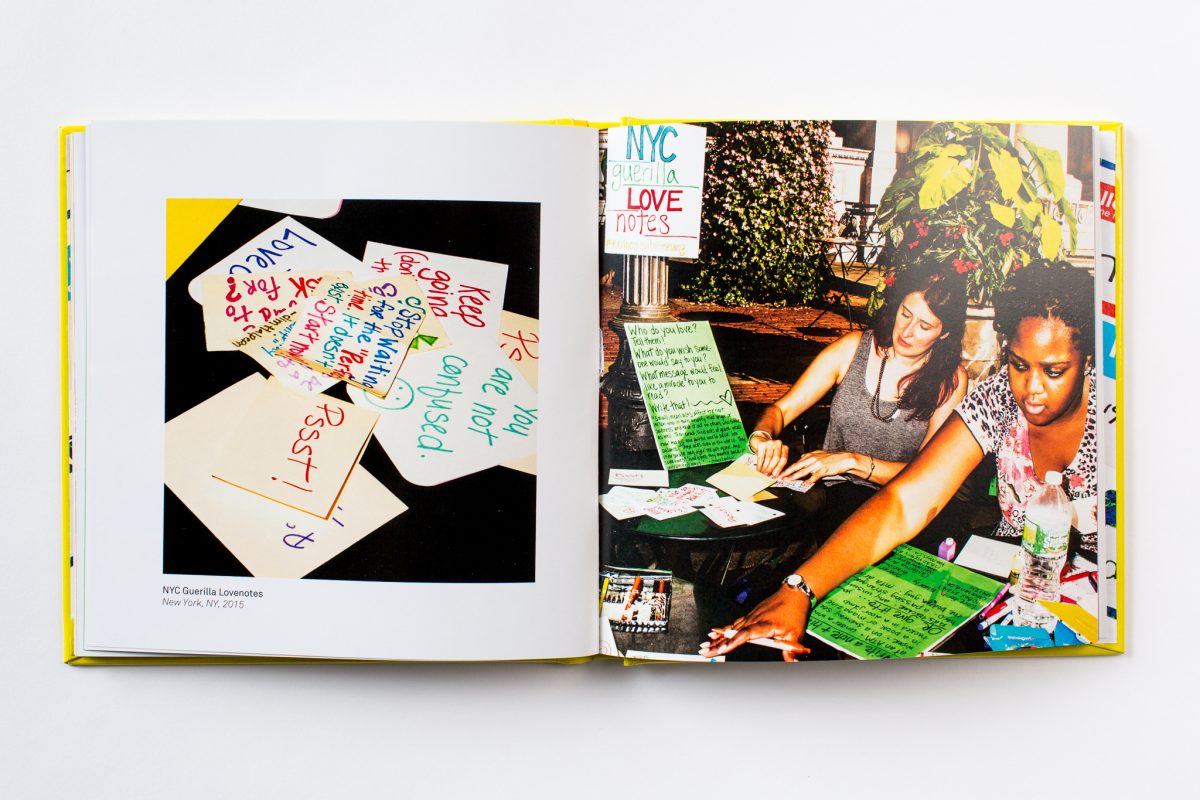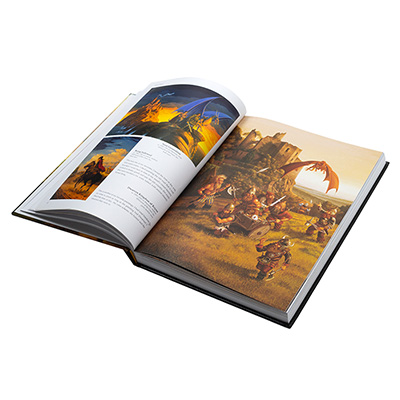Professional Methods to Improve Your art book Print Quality
Professional Methods to Improve Your art book Print Quality
Blog Article
Understanding the Process Behind Top Quality Art Book Printing for Art Lovers
When it comes to top notch art book printing, recognizing the ins and outs of the procedure can elevate your recognition for the last product. As you check out the numerous elements of art book printing, you'll discover insights that might change your perspective on art conservation and presentation.
The Significance of Paper Selection in Art Book Printing
When it pertains to art book printing, the choice of paper can make or damage the end product. You want your art work to beam, and the right paper improves shade vibrancy and detail. Take into consideration aspects like weight, texture, and surface; these components significantly affect just how visitors regard your job.
As an example, a heavier supply communicates quality and durability, while a distinctive surface can add depth to images. Smooth paper is excellent for detailed recreations, enabling great lines and refined tones to show up crisp.
Don't ignore the paper's brightness; a brighter sheet can assist shades pop, making your art a lot more distinctive. You'll additionally wish to consider exactly how the paper interacts with inks and whether it can take care of the printing process without buckling or bleed-through. Inevitably, selecting the best paper establishes the phase for your art, ensuring it captures the target market's focus just as you envisioned.
Choosing the Right Inks for Dynamic Recreations
Choosing the appropriate inks is equally as crucial as picking high quality paper to achieve lively recreations in your art book. When you're publishing artwork, you desire colors that pop and precisely represent the original item. Go with inks with a high pigment focus; these tend to produce richer and a lot more saturated colors.
You might take into consideration making use of historical inks, which stand up to fading over time, guaranteeing your art book remains as striking as the day it was published. If you're dealing with pictures or electronically developed art, pigment-based inks can supply a larger color gamut, boosting detail and depth.
Don't forget the finish! Matte and glossy inks can significantly alter the look of your art work, so think of the look you're aiming to accomplish - art book. Eventually, the right ink option complements your paper choice, developing a sensational aesthetic experience for your viewers
The Function of Shade Management in Print Quality
Color administration plays a vital role in achieving high print top quality for your art book. It assures that the shades you see on your screen convert precisely to the published page. Without reliable color management, your vibrant art work may appear dull or distorted, undermining your innovative vision.
Next, make use of shade accounts customized for your printer and paper type. These profiles guide the printer in replicating colors properly, decreasing discrepancies in between digital and published versions.
When you prepare your files, think about making use of a color room like Adobe RGB or CMYK, depending on your printer's specifications. Constantly evidence your job, as well; a test print can disclose any kind of prospective color concerns before the final run. By prioritizing shade monitoring, you safeguard the integrity of your art, assuring your audience experiences it as you planned.

Recognizing Various Binding Methods
Achieving the perfect try to find your art book goes past shade monitoring; binding strategies also play a significant function in its total presentation and toughness. You have a number of choices to review, each with its own special qualities.
If you're going for a professional feel, situation binding supplies a strong option with a tough cover, best for showcasing your art work. On the various other hand, perfect binding provides a versatile back while maintaining costs down, making it a popular choice for softcover books.
Spiral binding allows your art book to lay flat, which is terrific for presenting images without obstruction. On the other hand, saddle sewing is optimal for smaller pamphlets, providing a clean surface without the mass.
Ultimately, the binding strategy you pick must show your imaginative vision and how you want visitors to involve with your job. See to it to consider these choices thoroughly to accomplish the finest end result for your task.
The Impact of Publish Size and Design on Presentation
While the option of print dimension and format may appear second to content, they significantly affect just how your artwork is perceived. The dimensions of your prints can either boost or decrease the effect of your items. Bigger prints can attract visitors in, allowing them to appreciate elaborate details, while smaller sized styles may call for even more intimate interaction.

Conservation Techniques for Resilient Art Books
To guarantee your art publications stand the test of time, it's vital to implement effective preservation techniques. Begin by storing them in a great, completely dry setting, away from direct sunlight and humidity. This stops fading and bending, keeping your pages undamaged. Usage acid-free storage space boxes or safety sleeves to protect them from dust and physical damage.
When handling your publications, constantly clean your hands or put on cotton gloves to prevent oils and dust moving onto the web pages. Stay clear of flexing or wrinkling the spinal columns; rather, make use of book supports when showing them.
For included protection, think about buying archival-quality materials for any kind of repairs or improvements. Frequently inspect your more info collection for indicators of wear or damages, attending to concerns without delay. By complying with these basic strategies, you can ensure your art publications stay dynamic and easily accessible for many years to come, protecting their appeal and worth for future generations.
Working together With Printers for Optimal Outcomes
When you're prepared to publish your art book, picking the appropriate printer is vital to achieving your vision. Clear communication about your expectations and requirements will certainly assist assure that both you and the printer are on the exact same page. Let's check out just how to make this partnership as seamless and efficient as possible.
Picking the Right Printer

Efficient Interaction Approaches
Efficient interaction is crucial for transforming your art book vision right into fact, specifically when working together with printers. art book. Begin by clearly describing your job's goals, including design aspects, recommended materials, and any type of particular printing methods. Don't hesitate to share your inspirations and recommendations; this assists the printer understand your aesthetic
Set up regular check-ins to discuss progress and resolve any inquiries. Usage visuals, like mock-ups or examples, to convey your concepts a lot more successfully. Be open to feedback, as printers frequently have important understandings that can improve your project. Preserve a positive relationship by being respectful and satisfied of their know-how. This partnership will guarantee that your art book fulfills your expectations and beams in its final type.
Frequently Asked Questions
What Are Typical Blunders to Prevent in Art Book Printing?
When printing your art book, stay clear of usual errors like bad resolution pictures, wrong color profiles, and neglecting web page format. Don't neglect to check and verify details to verify your final item meets your expectations.
Exactly How Does Digital Printing Differ From Standard Printing Methods?
Digital printing uses electronic data to create prints click here straight, permitting quicker turnaround and personalization. In comparison, typical techniques entail physical plates, which can be time-consuming and much less versatile for little runs or unique layouts.
What Is the Normal Turn-around Time for Art Book Printing?
The normal turn-around time for art get more info book printing varies, however you can anticipate it to take anywhere from a couple of weeks to a number of months. Aspects like intricacy, amount, and printing method all affect this timeline.
Can I Print a Restricted Version Art Book Economically?
You can print a limited version art book economically by picking cost-efficient materials, enhancing print runs, and using digital printing options. Cautious planning and budgeting will assist you attain top quality without spending beyond your means.
What Are the Ecological Factors To Consider in Art Book Printing?
When taking into consideration art book printing, you ought to think concerning environment-friendly materials, lasting inks, and energy-efficient procedures (art book). Picking regional printers can additionally decrease your carbon impact, making your project both beautiful and environmentally liable
Report this page